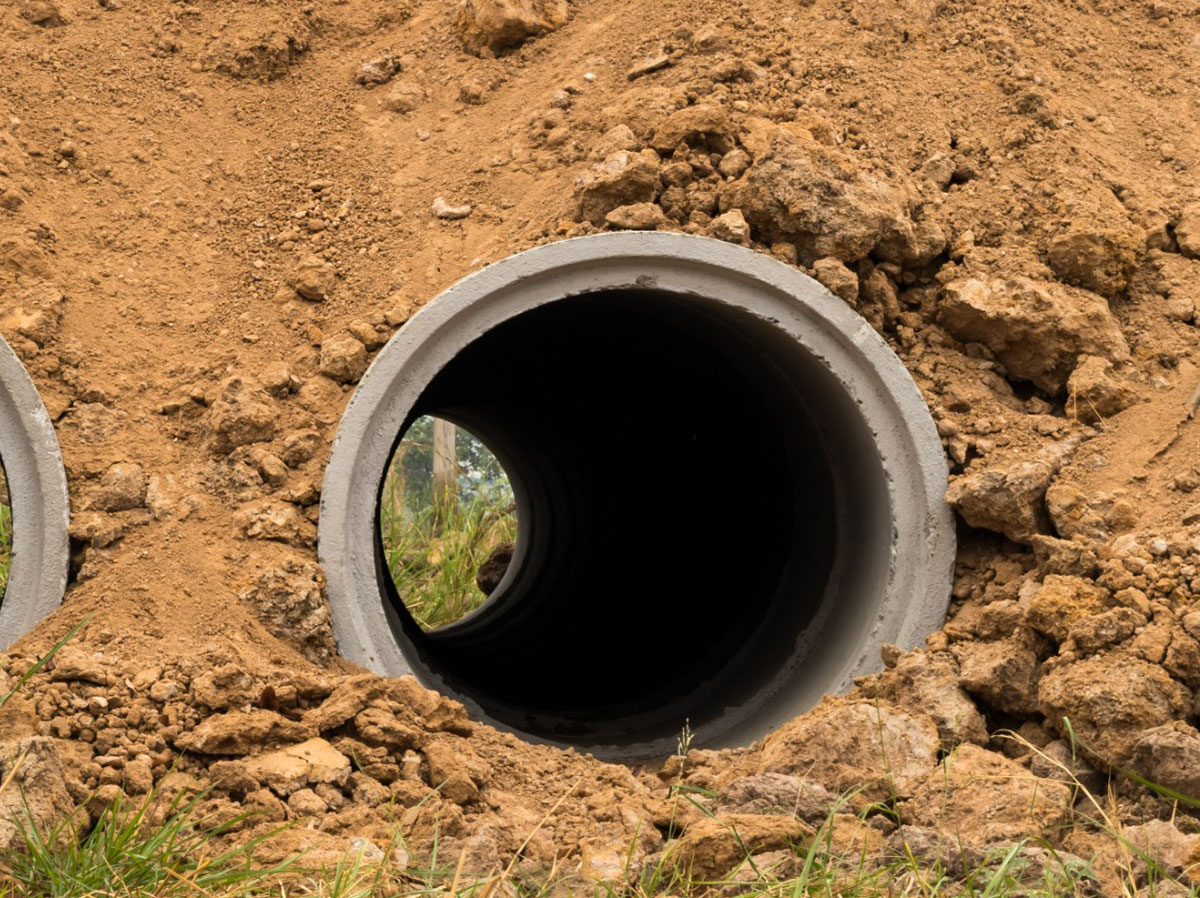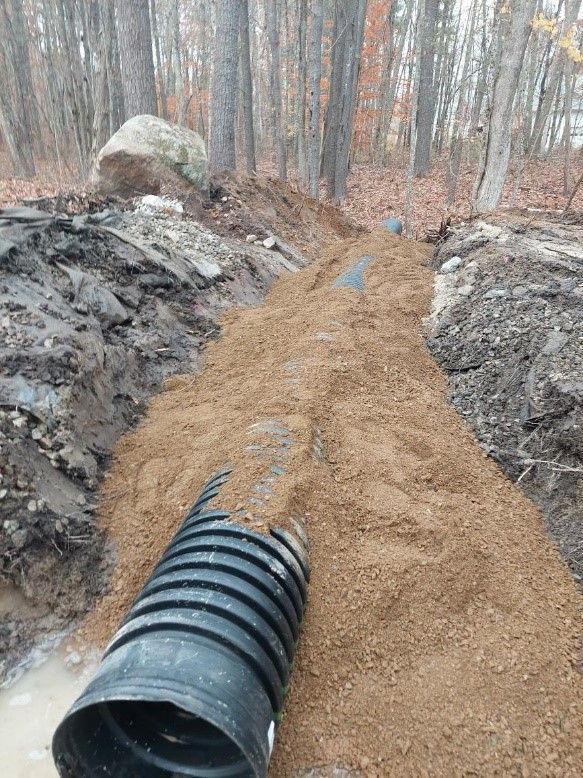Culvert Setup Facilitated: Step-by-Step Guide for Success
From selecting the suitable culvert size to incorporating correct water drainage procedures, each action in the setup procedure plays a critical role in the functionality and long life of the culvert system. Stay tuned to discover the necessary steps and factors to consider that can make culvert setup a smooth and successful venture.
Picking the Right Culvert Size
Picking the ideal culvert dimension is vital for making certain effective water circulation and structural honesty in culvert installation tasks - Pad Construction. The dimension of the culvert straight affects the circulation capability of water via the structure. A culvert that is as well little can result in flooding and overflow, while one that is also large might cause decreased water rate, potentially creating sediment buildup and obstructions
To identify the right culvert size, aspects such as the watershed area, optimal circulation prices, and hydraulic efficiency demand to be meticulously considered. Estimations based on these criteria help in selecting a size that can effectively take care of the predicted water volume while lessening the risk of obstructions and architectural failure.
It is vital to speak with engineering guidelines and requirements to make certain that the selected culvert dimension satisfies the job requirements and local regulations (Pad Construction). By choosing the appropriate culvert dimension, task managers can optimize water circulation, avoid prospective problems, and boost the total effectiveness and long life of the culvert installation
Preparing the Installment Site
Effective culvert installment demands meticulous prep work of the setup site to ensure optimum architectural assistance and performance. Prior to beginning the installment procedure, it is crucial to clear the site of any particles, plant life, or obstructions that might hinder the culvert's positioning. Ensuring a degree structure is vital for the proper alignment and stability of the culvert. This might include grading the website to create a smooth, also surface that can effectively support the weight of the culvert and any type of awaited lots. Additionally, proper compaction of the soil beneath the culvert is necessary to avoid settling or moving gradually.
Moreover, it is necessary to think about elements such as soil make-up, groundwater degrees, and ecological influences when preparing the setup site. Conducting a complete website analysis can help determine any type of prospective challenges or risks that might affect the culvert's efficiency. By taking the time to prepare the setup website correctly, you can aid assure a successful culvert setup that satisfies structural demands and makes certain lasting capability.
Positioning the Culvert Appropriately

The grade at which the culvert is placed is important for keeping a proper incline for water flow. A progressive slope assists stop merging and advertises reliable drainage. Additionally, the culvert ought to be oriented appropriately to ensure that the inlet and electrical outlet remain in the appropriate locations. This orientation is necessary for the culvert to operate efficiently in taking care of water circulation.
Backfilling and Condensing the Soil
Proper backfilling and compaction of the soil around the culvert is necessary to ensure security and prevent potential problems in the future. Once the culvert is appropriately put, the following critical step is to backfill linked here the area around it with ideal product. The backfill product ought to be cost-free from rocks, particles, and natural matter to stay clear of damages to the culvert. It is suggested to use granular product such as sand or original site gravel for backfilling, as it offers excellent water drainage and compaction residential or commercial properties.
After putting the backfill product, it is crucial to compact it in layers of consistent density. Using a compactor or a mechanical tamper, portable the dirt gently to stay clear of harming the culvert. Compaction assists in decreasing the opportunities of negotiation and guarantees uniform assistance around the culvert. It is essential to portable the soil uniformly on all sides of the culvert to keep its architectural honesty.
Proper backfilling and compaction not just offer stability to the culvert yet likewise aid in protecting against soil erosion and maintaining the longevity of the culvert system.
Ensuring Proper Drainage Integration
Integrating reliable water drainage services plays a crucial role in the overall capability and longevity of culvert installations. Appropriate drain combination is essential for taking care of water flow, avoiding erosion, and making sure the architectural stability of the culvert system. To attain this, it is vital to develop a thorough drainage strategy that thinks about elements such as the quantity of water anticipated, the topography of the area, and the sort of dirt existing.

Additionally, including features like erosion control measures, such as riprap or vegetation, can additionally improve the performance of the drain system. By meticulously planning and applying these drainage solutions, culvert installments can operate successfully and hold up against the examination of time.
Final Thought
In final thought, appropriate culvert installment is essential for keeping click here for info efficient drain systems. By picking the appropriate culvert dimension, preparing the setup website, placing the culvert properly, backfilling and compacting the dirt, and making sure correct drainage integration, success can be accomplished. Complying with these steps will certainly help ensure the durability and performance of the culvert, eventually adding to the total success of the drain system.